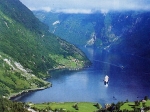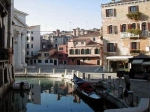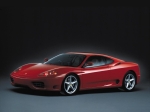
 The Republic of Croatia is a crescent-shaped country in Europe bordering the Mediterranean , Central Europe and the Balkans . Its capital is Zagreb . In recent history, it was a republic in SFR Yugoslavia .
The Republic of Croatia is a crescent-shaped country in Europe bordering the Mediterranean , Central Europe and the Balkans . Its capital is Zagreb . In recent history, it was a republic in SFR Yugoslavia .
Geography
Croatia is situated between central, southern and eastern Europe. It has a rather peculiar shape that resembles a crescent or a horseshoe which helps account for its many neighbours: Slovenia , Hungary , Serbian part of Serbia and Montenegro , Bosnia and Herzegovina , Montenegrin part of Serbia and Montenegro, and Italy across the Adriatic. Its mainland territory is split in two non-contiguous parts by the short coastline of Bosnia and Herzegovina around Neum .
Its terrain is diverse, containing:
- plains, lakes and rolling hills in the continental north and northeast (Central Croatia and Slavonia , part of the Pannonian plain );
- densely wooded mountains in Lika and Gorski Kotar, part of the Dinaric Alps ;
- rocky coastlines on the Adriatic Sea ( Istria , Northern Seacoast and Dalmatia ).
Croatia has a mixture of climates . In the north and east it is continental, Mediterranean along the coast and a semi-highland and highland climate in the south-central region.
Economy
Croatia has an economy based mostly on various services and some, mostly light industry . Tourism is a notable source of income. The Gross Domestic Product per capita in purchasing power parity terms for 2002 was USD 9,800 or 42.7% of the EU average.
The Croatian economy is post-communist . In the late 1980s, at the beginning of the process of economic transition , its position was favourable, but it was gravely impacted by de-industrialization and war damages.
Main problems include massive structural unemployment followed by an insufficient amount of economic reforms. Of particular concern is the gravely backlogged judiciary system combined with inefficient public administration , especially involving land ownership.
The country has since experienced faster economic growth and has been preparing for membership in the European Union, its most important trading partner .
In February 2005, Croatia implemented the Stabilization and Association Agreement with the EU and is advancing further towards full EU membership. The country expects some major economic impulses and high growth rates in the following next years (currently Croatia suffers most from its high export deficit and considerable debt). Some big trading companies have already taken advantage of the liberalization of the Croatian market. Croatia is expecting a boom in investments, especially greenfield investments.
Demographics
The population of Croatia has been stagnating over the last decade. The natural growth rate is minute or negative (less than +/- 1%), as the demographic transition has been completed half a century ago. Life expectancy rate is around 75 years, and the literacy rate is at 98.5%, both of which are reasonably high.
Croatia is inhabited mostly by Croats (89.6%). Minority groups include Serbs (4.5%), Bosniaks (0.5%), Hungarians (0.4%) and others. The predominate religion is Catholicism (87.8%), with some Orthodox (4.4%) and Sunni Muslim (1.3%) minorities.
The official and common language, Croatian , is a South Slavic language , using the Latin alphabet . Other languages are spoken by less than 5% of the population.
Culture
Croatian culture is based on thirteen century long history during which the country has attained many monuments and cities, which gave birth to a fair number of brilliant individuals . The country includes six World Heritage sites and eight national parks . Three Nobel prize winners came from Croatia, as did numerous important inventors and other notable people — notably, some of the first fountain pens came from Croatia.
Interestingly enough, Croatia also has an place in the history of neckwear as the origin of the necktie ( cravat ). The country has a long artistic, literary and musical tradition . Of particular interest is also the diverse cuisine .




